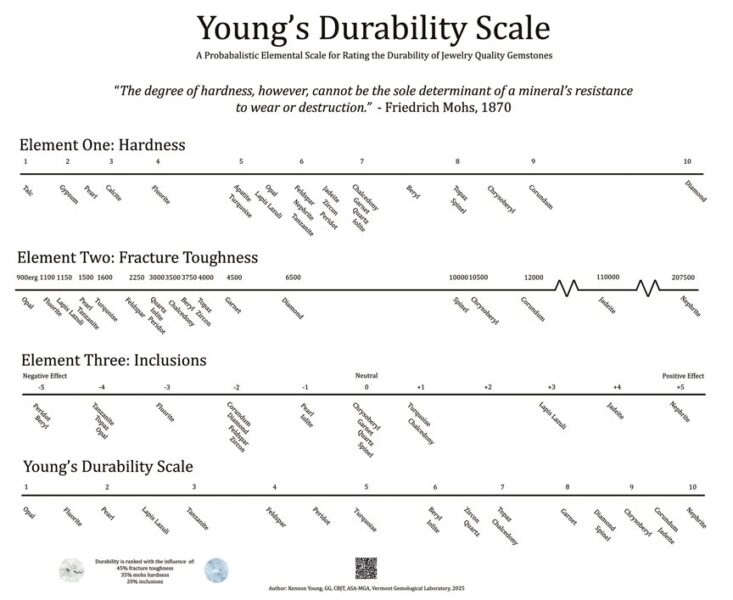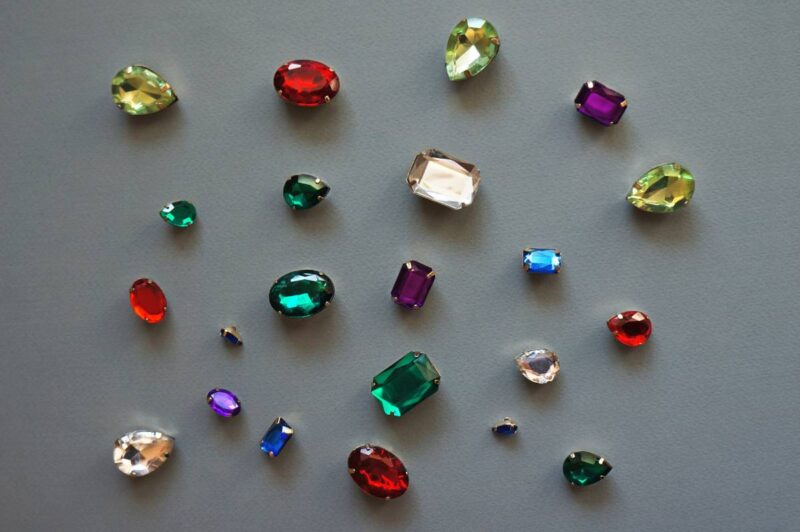A new model for assessing gemstone durability, developed by Kennon Young of the Vermont Gemological Laboratory, has been introduced to the trade.
Known as Young’s Durability Scale, it proposes a weighted, multi-factor approach to durability that extends beyond the traditional reliance on the Mohs scale of hardness.
Beyond Hardness: A Revised Approach to Durability
The Mohs scale, first introduced in 1812, has long served as the standard for evaluating gemstone wearability. However, it primarily measures surface scratch resistance and does not account for other critical aspects of durability. The new model by Young incorporates three core factors: hardness (35 percent weighting), fracture toughness (45 percent), and inclusions (20 percent).
Fracture toughness is assessed as the most predictive of gemstone damage under normal wear, while inclusions are evaluated in terms of their frequency, distribution and interaction with cleavage planes.
This probabilistic framework, which integrates material science and gemological data, provides a more comprehensive assessment of how gemstones are likely to perform in real-world use.

Re-ranking Familiar Gemstones
Young’s model has resulted in a revised ranking of gemstone durability. Nephrite jade, for example, ranks higher than diamond due to its fibrous structure and superior toughness. Although diamond remains the hardest known natural material, its cleavage planes and susceptibility to damage from inclusions place it lower in overall durability. Meanwhile, opal and fluorite are positioned at the lower end of the scale, reflecting their known vulnerability to wear.
These durability scores are designed to assist jewellers and related professionals in making more informed decisions regarding gemstone selection, especially in high-wear applications such as rings and bracelets.
Practical Implications for the Trade
The scale offers jewellers, designers, and gemmologists a new tool to evaluate gemstone suitability for various types of jewelry. Designers may find the model useful for selecting materials that strike a balance between aesthetics and structural performance. For retailers and appraisers, the scale provides a science-based reference for communicating wearability and risk to clients and insurance providers.
“This model finally gives the jewelry industry a practical, science-backed way to evaluate gemstone durability that goes far beyond scratch resistance,” said Young. “It’s a tool that empowers everyone, from bench jewellers to auction houses, to make better-informed decisions about gemstone use, care, and long-term value.”
Industry Validation and Future Applications
Young’s Durability Scale was reviewed by Al Gilbertson of the Gemological Institute of America (GIA) and presented during the GIA’s Poster Session at Converge. While not all gemstones are currently included—tourmaline, for example, lacks fracture toughness data—the model provides statistically grounded predictions for typical wear conditions across the included gem species.
By moving gemstone durability assessment from single-metric evaluation to a weighted, empirical model, Young’s Durability Scale may influence how gemstone resilience is communicated within the trade. It arrives at a time when transparency, scientific validation, and longevity are increasingly prioritised in consumer and trade conversations.




